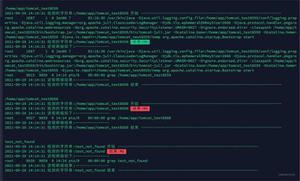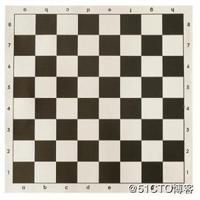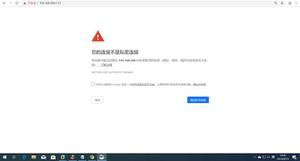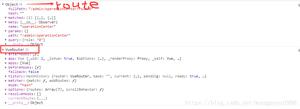vue vue-router 完美实现前进刷新,后退不刷新。附scrollBehavior源码解析

需求:在一个vue的项目中,我们需要从一个列表页面点击列表中的某一个详情页面,从详情页面返回不刷新列表,而从列表的上一个页面重新进入列表页面则需要刷新列表。
而浏览器的机制则是每一次的页面打开都会重新执行所有的程序,所以这个功能并不能直接实现。而vue-router给我们提供了一个叫scrollBehavior的回调函数,我门可以用这个方法结合keep-alive能很好的实现这个功能,下面第一步附上实现代码:
首先我们创建a,b,c,d四个页面,在路由的meta属性中添加需要缓存的页面标识(isKeepAlive):
import Vue from 'vue' import Router from 'vue-router' const HelloWorld = () => import('@/components/HelloWorld')const A = () => import('@/components/router-return/router-a')
const B = () => import('@/components/router-return/router-b')
const C = () => import('@/components/router-return/router-c')
const D = () => import('@/components/router-return/router-d')
Vue.use(Router)
const routes = [
{
path: '/',
name: 'HelloWorld',
component: HelloWorld
}, {
path: '/a', //前端全栈学习交流圈:866109386
name: 'A',//面向1-3年前端开发人员
component: A//帮助突破技术瓶颈,提升思维能力
}, {
path: '/b',
name: 'B',
component: B,
meta: {
isKeepAlive: true }
}, {
path: '/c',
name: 'C',
component: C
}, {
path: '/d',
name: 'D',
component: D
}
]
然后我们修改app.vue页面:
<template> <div id="app">
<img src="./assets/logo.png">
<keep-alive>
<router-view v-if="$route.meta.isKeepAlive"/>
</keep-alive>
<router-view v-if="!$route.meta.isKeepAlive"/>
</div>
</template>
最后我们添加new Router方法的scrollBehavior的回调处理方法:
export default new Router({ routes,
scrollBehavior (to, from, savedPosition) {
// 从第二页返回首页时savedPosition为undefined
if (savedPosition || typeof savedPosition === 'undefined') {
// 只处理设置了路由元信息的组件
from.meta.isKeepAlive = typeof from.meta.isKeepAlive === 'undefined' ? undefined : false
to.meta.isKeepAlive = typeof to.meta.isKeepAlive === 'undefined' ? undefined : true
if (savedPosition) {
return savedPosition
}
} else {
from.meta.isKeepAlive = typeof from.meta.isKeepAlive === 'undefined' ? undefined : true
to.meta.isKeepAlive = typeof to.meta.isKeepAlive === 'undefined' ? undefined : false
}
}
})
在scrollBehavior方法中的savedPosition参数,每一次点击进去的值为null,而点击浏览器的前进与后退则会返回上一次该页面离开时候的pageXOffset与pageYOffset的值,然后我们可以根据这个返回的值来修改路由信息里面的isKeepAlive值来控制是否显示缓存。
我们来看下vue-router里面scrollBehavior执行的源码:
在vue-router.js的1547行发现:
function handleScroll ( router, to, from, isPop) { if (!router.app) {
return
}
var behavior = router.options.scrollBehavior;
if (!behavior) {
return //前端全栈学习交流圈:866109386
}// 面向1-3年前端开发人员
// 帮助突破技术瓶颈,提升思维能力。
{
assert(typeof behavior === 'function', "scrollBehavior must be a function");
}
// wait until re-render finishes before scrolling
router.app.$nextTick(function () {
// 得到该页面之前的position值,如果没有缓存则返回null
var position = getScrollPosition();
var shouldScroll = behavior(to, from, isPop ? position : null);
if (!shouldScroll) {
return
}
if (typeof shouldScroll.then === 'function') {
shouldScroll.then(function (shouldScroll) {
// 移动页面到指定位置
scrollToPosition((shouldScroll), position);
}).catch(function (err) {
{
assert(false, err.toString());
}
});
} else {
// 移动页面到指定位置
scrollToPosition(shouldScroll, position);
}
});
}
再看下上面方法中用到的几个主要方法的写法:
// getScrollPosition 得到移动的坐标function getScrollPosition () {
var key = getStateKey();
if (key) {
return positionStore[key]
}
}
// scrollToPosition 页面移动方法
function scrollToPosition (shouldScroll, position) {
var isObject = typeof shouldScroll === 'object';
if (isObject && typeof shouldScroll.selector === 'string') {
var el = document.querySelector(shouldScroll.selector);
if (el) {
var offset = shouldScroll.offset && typeof shouldScroll.offset === 'object' ? shouldScroll.offset : {};
offset = normalizeOffset(offset);
position = getElementPosition(el, offset);
} else if (isValidPosition(shouldScroll)) {
position = normalizePosition(shouldScroll);
}
} else if (isObject && isValidPosition(shouldScroll)) {
position = normalizePosition(shouldScroll);
}
if (position) {
window.scrollTo(position.x, position.y);
}
}
然后我们看看vue-router是怎么缓存页面x,y的坐标的,上面的getScrollPosition是用来获取坐标的,那么肯定也有保存坐标的方法,在getScrollPosition的上面一个方法则是saveScrollPosition就是保存的方法:
// saveScrollPosition function saveScrollPosition () {
var key = getStateKey();
if (key) {
positionStore[key] = {
x: window.pageXOffset,
y: window.pageYOffset
};
}
}
而这个保存的方法会有一个key值是缓存的标识,继续查找getStateKey:
根据上面代码发现key值就是一个时间值。而setStateKey则是一个key值更新的方法,然后继续查找setStateKey执行的地方:
function setupScroll () { // Fix for #1585 for Firefox
window.history.replaceState({ key: getStateKey() }, '');
window.addEventListener('popstate', function (e) {
saveScrollPosition();
if (e.state && e.state.key) {
setStateKey(e.state.key);
}
});
}
然后发现该方法执行的地方是popState执行的时候,而key的来源则是popState返回参数里面的state属性里面,而state值的设定则是pushstate执行的时候传进去的,所以我们继续查pushstate执行的方法:
function pushState (url, replace) { saveScrollPosition();
// try...catch the pushState call to get around Safari
// DOM Exception 18 where it limits to 100 pushState calls
var history = window.history;
try {
if (replace) {
history.replaceState({ key: _key }, '', url);
} else {
_key = genKey();
history.pushState({ key: _key }, '', url);
}
} catch (e) {
window.location[replace ? 'replace' : 'assign'](url);
}
}
根据上面代码发现,每次push的时候都会去生成一个当前时间的key值保存在state里面,作用于popstate时使用。
那么到此scrollBehavior方法的整个执行逻辑就清楚了:该方法最主要的是运用了浏览器的popstate方法只会在浏览器回退与前进才会执行的机制,在页面进入时生成一个唯一的key值保存在state里面,离开的时候将页面滚动位置保存在state里面的唯一key值上。每次pushstate的时候key值都是最新的,没有缓存所以返回null,而执行popstate的时候state里面的key都有缓存,则返回上次离开时候的滚动坐标。
每一次的记录,都是向前迈进的一步。
以上是 vue vue-router 完美实现前进刷新,后退不刷新。附scrollBehavior源码解析 的全部内容, 来源链接: utcz.com/z/376151.html









